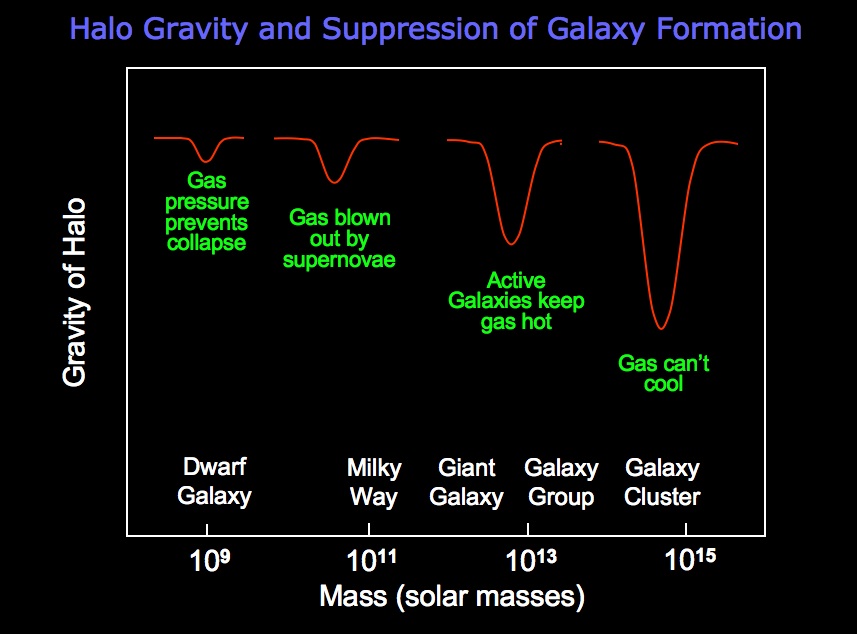
The observed galaxy mass function (from the luminosity function) also has a Schechter form, but does not match the halo mass function. It lacks very big galaxies and has too few very small galaxies.

One explanation for the paucity of large and small galaxies involves looking at the depth of the potentials for halos of different size. This affects whether baryons can form stars and hence a galaxy.
(a) Cluster sized potentials are so deep the baryons falling in become too hot to cool.
(b) AGN jets may re-heat gas that might otherwise have cooled in smaller (but still massive) halos.
(c) Starbursts/supernovae/winds may blow out the baryons in smaller halos.
(d) Gas may never fall into the smallest halos, since after re-ionization its temperature and pressure are too high.